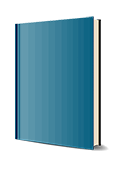Optimality Theory
Constraint Interaction in Generative Grammar

1. Auflage August 2004
304 Seiten, Softcover
Wiley & Sons Ltd
This book is the final version of the widely-circulated 1993
Technical Report that introduces a conception of grammar in which
well-formedness is defined as optimality with respect to a ranked
set of universal constraints.
* * Final version of the widely circulated 1993 Technical Report
that was the seminal work in Optimality Theory, never before
available in book format.
* Serves as an excellent introduction to the principles and
practice of Optimality Theory.
* Offers proposals and analytic commentary that suggest many
directions for further development for the professional.
Acknowledgments x
Part I Optimality and Constraint Interaction 11
Part II Syllable Theory 101
Part III Issues and Answers in Optimality Theory 203
Appendix 258
References 266
Index of Constraints 281
Index of Languages 283
General Index 284
transformed the field of linguistics more than almost any other
development of the past half-century, and Prince and Smolensky
started it all." John J. McCarthy, University of
Massachusetts, Amherst
"OT does not need to permanently influence linguistic theory: it
has already done so. Between 1993 and 2004, Prince and
Smolensky's Optimality Theory was by far the most
widely circulated manuscript among phonologists. Fortunately, it is
now available for a larger audience in this text edition."
René Kager, Utrecht University
Cognitive Science Center at Rutgers University and is, along with
Paul Smolensky, one of the founders of Optimality Theory. He has
published in journals such as Linguistic Inquiry,
Science, Cognition, and Critical
Inquiry.
Paul Smolensky is Professor of Cognitive Science at Johns
Hopkins University. His publications include Learnability in
Optimality Theory (with Bruce Tesar, 2000) and Mathematical
Perspectives on Neural Networks (edited with Michael Mozer and
David Rumelhart, 1996).


